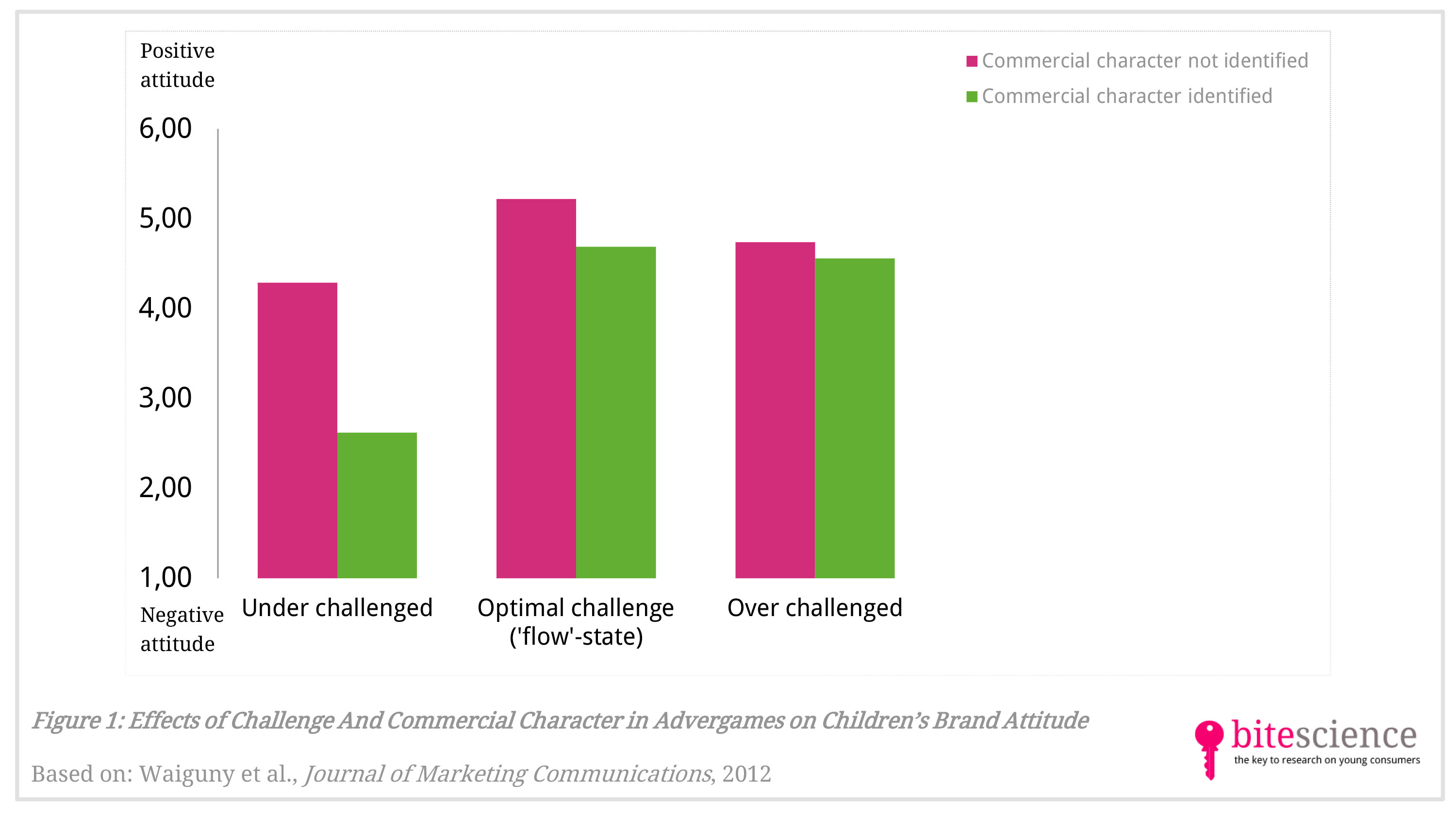
Unchallenging Advergames: The Biggest Pitfall to Success
Advergames are mostly created to engage players and at the same time increase awareness of a certain brand. Especially the ‘engage’-part seems to be important for the success of advergames according to a study in the Journal of Marketing Communications. Study results show that advergames targeted to children, must be optimally challenging in order to create positive brand attitudes.
Take aways
- When children are optimally challenged in their game play and arrive in a so-called ‘flow’-state, they experience brands in advergames as more positive than when they’re underchallenged by the game.
- Therefore, developers of advergames should make sure that games are not too easy for the target group.
- Children’s attitude towards brands in advergames was less positive when they were able to identify the commercial character of the game (i.e., identify brands or ads).
Study information
The question?
How does the challenge of playing and advergame and the knowledge of the commercial intent of the game affect children’s brand attitudes?
Who?
101 children (age range: 7 to 10 years old, 88% aged 8 or 9; 58 boys and 43 girls; almost 90% of the children had access to a computer)
Where?
Austria, Europe
How?
Children were first asked about their demographics, possession of gaming devices and brand usage. After these questions they played the advergame ‘Garden Quest’ of the brand Nesquik (sells breakfast cereals, cacao and chocolate syrup). During game play, the children were observed by two interviewers in order to rate their challenge level: underchallenged, optimally challenged (called ‘flow’-state), or overchallenged. Afterwards children were asked questions about the game and the brand (brand recognition and brand attitude). After a short introduction to advergames (‘advergames are games which include a brand or product’), they were also asked about the purpose of the advergame.
Facts and findings
- Children who identified the commercial character of the advergame (i.e., identified brands or ads in the game), were less positive about the brand Nesquik than children who did not identify the commercial character.
- Children who were underchallenged during their game play were less positive about the brand than children who were optimally challenged (in flow-state) or overchallenged during their game play.
- An explanation for this finding could be that children who are optimally focused and engaged in their game play, experience more pleasure, which is transferred to the embedded brand. This is called the affect transfer effect.
- Children who were in flow-state and who didn’t identify the commercial character of the game were the most positive about the brand, whereas children who were underchallenged and who did identify the commercial intent were the least positive (see Figure 1).
